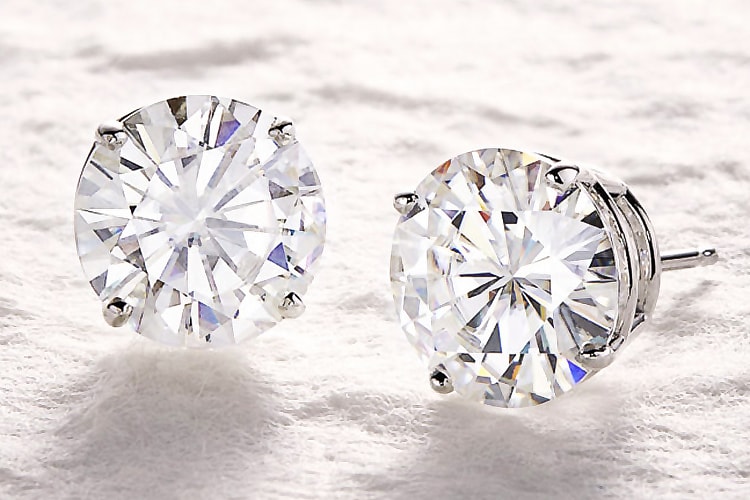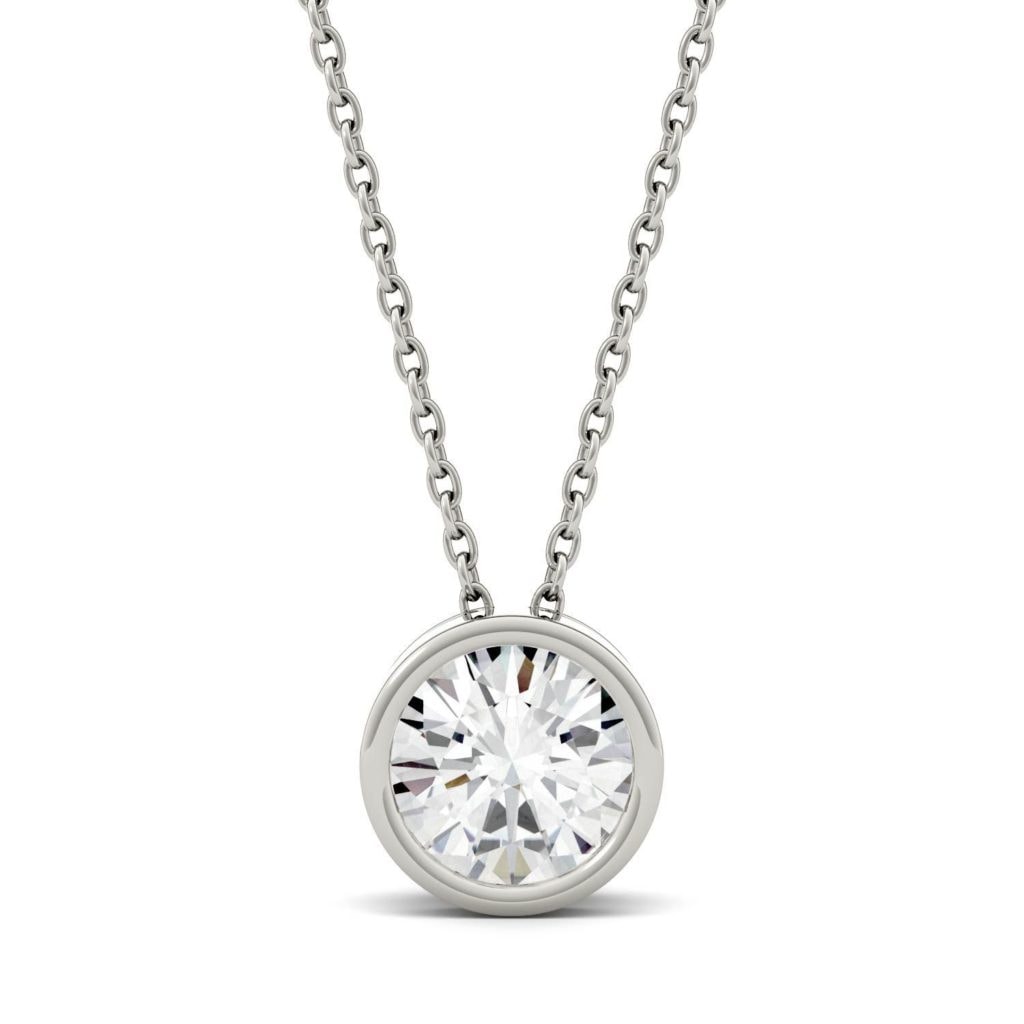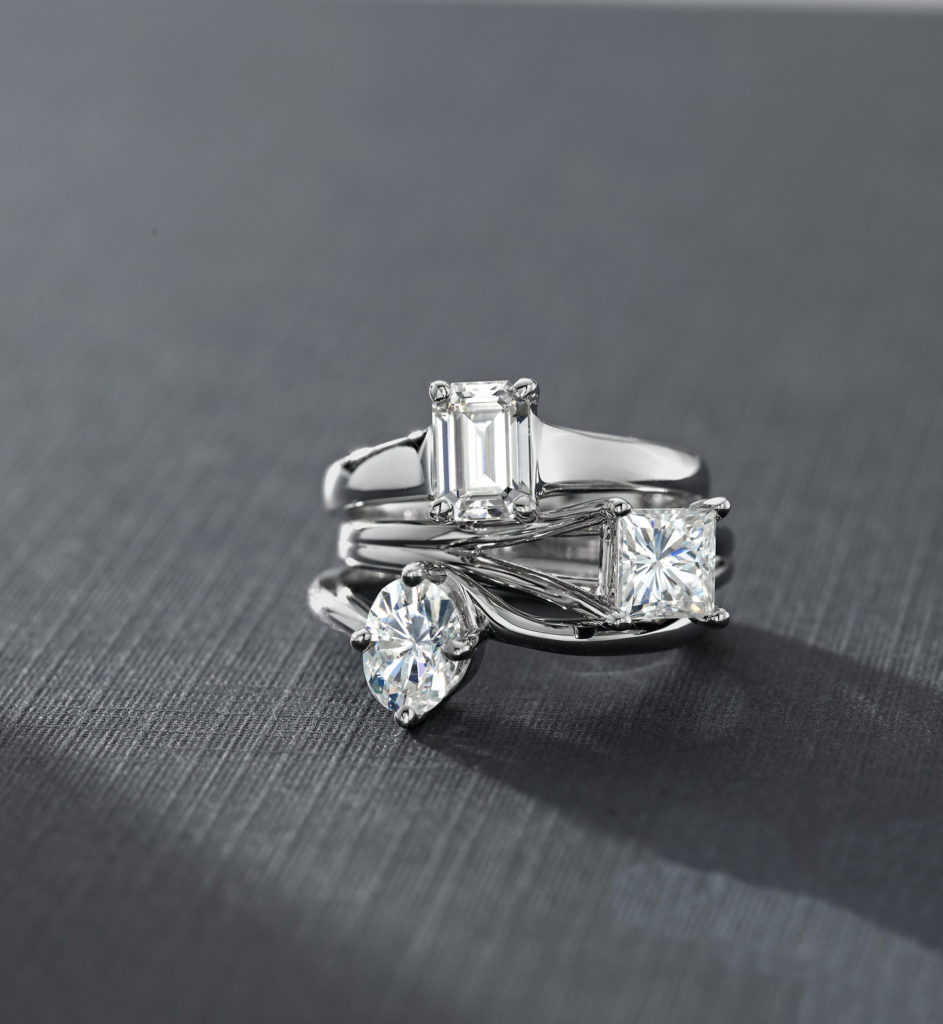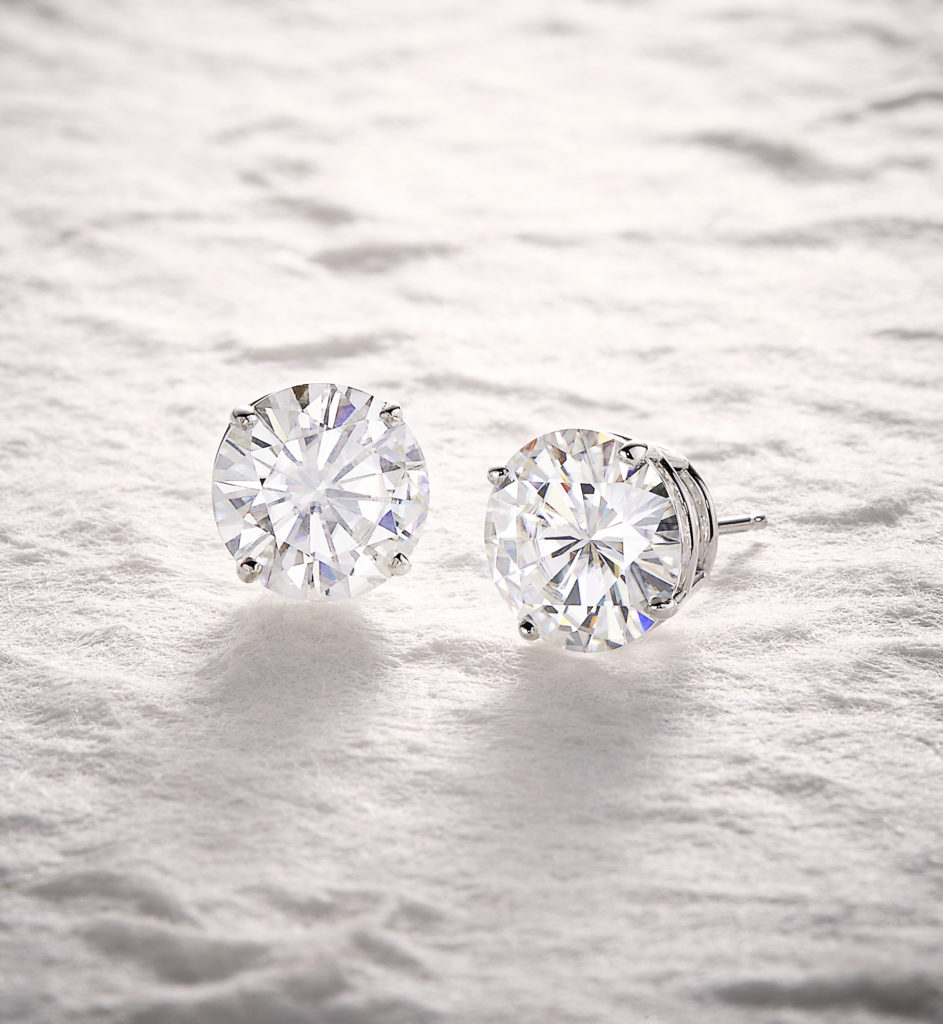Guide to Moissanite

What exactly is moissanite? Is it a laboratory-grown diamond substitute? Not at all.
Moissanite is the name given to a naturally occurring and laboratory-grown mineral made up of silicon carbide. Its occurrence in nature is extremely rare and has only been found in upper mantle rock and meteorites. Discoveries have shown moissanite occurs naturally as inclusions in diamonds, xenoliths, kimberlite, and lamproite.
Discovered over 120 years ago, moissanite gems have come so far from being just silicon carbide. Today—because of its rarity—moissanite is lab grown with minimal environmental impact. Because of its durability, moissanite can be found in a variety of cuts, which give jewelry designers a plethora of options for moissanite engagement rings and other jewelry settings.
When browsing the market for moissanite, keep in mind brilliance and variety. These two factors are what sets the gemstone apart from diamonds and other similar jewelry gems. No matter what shape catches your eye, there’s nothing like seeing this stunning gem in person.
Moissanite Gems: A Rocky Discovery
Moissanite was discovered over 120 years ago by Nobel Prize-winning French chemist, Dr. Henri Moissan. He was looking for crystalline chemical compositions ideal for efficient electrical conductivity. During the search, Dr. Moissan discovered silicon carbide—a remarkable and extremely rare mineral—in a meteorite crater in Arizona. It was then named “moissanite” in his honor.
Dr. Moissan spent the remainder of his life trying to recreate his extraordinary finding but never succeeded.
In the late 1990s, researchers from the Research Triangle Park in North Carolina developed and patented a process for creating pure silicon carbide (SiC). This was used in the development of diverse products that included semiconductors, LED lighting and extremely hard drilling tools and abrasives.
The Future of Moissanite Jewelry
It was then that the vision and innovation of Charles & Colvard—the original creator of moissanite—came to fruition. The process of producing moissanite is lengthy, taking two to three months to create a single gem. Whether you love the classic round shape or want something more unique like the emerald shape, the brilliance of this gemstone is worth experiencing in person.
How to buy Moissanite
If you are in the market for moissanite, here are two attributes to note:
Brilliance: Moissanite’s faceting pattern allows it to emanate light in every direction, especially in sunlight! The bigger the moissanite stone, the more prominent the sparkle.
Variety: Because of its durability, moissanite lends itself to a wide variety of cuts and fancy shapes.
Like all gemstones and jewelry, it’s best to see moissanite in person! Contact an AGS-certified jeweler near you and they’ll be happy to answer all your questions about remarkable moissanite.

Round moissanite studs by Charles & Colvard

Stacked moissanite rings by Charles & Colvard

Bezel round solitaire by Charles & Colvard
Source: American Gem Society, www.americangemsociety.org